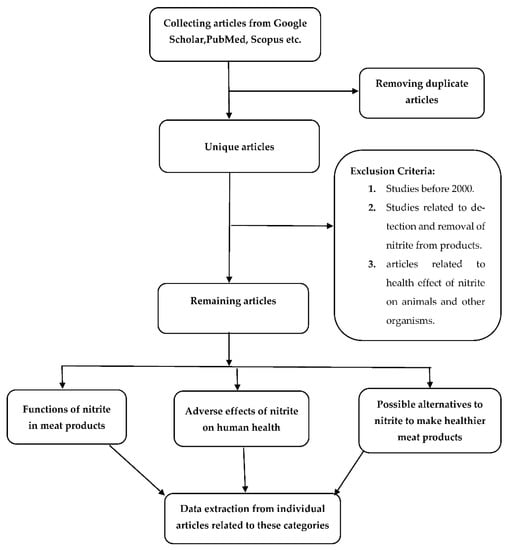What a great thread on this topic!! I'd like to add a few thoughts on the issue (with study links).
For starters, I'm not being paid to talk about EcoCure by any party. It's a product that I've been using for several months, and after a tremendous amount of research and due diligence I feel like I can suggest this product to others who are looking for an alternative to using traditional nitrite cures. I will say that when I first got EcoCure I was a bit sticker shocked! The price per pound is not even close to what traditional curing salts cost. With that being said I also realize that EcoCure isn't for everyone. If you don't have a problem with conventional curing agents that are nitrite based, then this is more than likely not a good option for you.
With that being said, let's start with some foundation. This product (EcoCure), isn't a new product. It's actually been around for a bit over 10 years and has been used commercially in bacons and hams in Europe and in the US. Here is a company out of Ireland (
https://www.producer.com/news/worlds-first-bacon-without-nitrites-developed/) that's been using this product to make their bacons - sold throughout the UK (
https://www.betternaked.com/products/better-naked-unsmoked-back-bacon-rashers/). In the United States, Pederson Farms is using this product to produce some of their bacon (
https://pedersonsfarms.com/products/no-sugar-added-hickory-smoked-uncured-bacon-4-pack) and if you look at the label you will see that it contains no nitrites. As a comparison here is a different style of bacon that Pederson sells using a different curing agent (
https://pedersonsfarms.com/products/organic-no-sugar-added-uncured-smoked-bacon-4-pack). Looking at this we can read that there ARE nitrites in this second product, and they come from celery powder. I talked to the folks at Pederson, and they also confirmed this.
In order to understand EcoCure and how it works we must dissolve the idea that nitrites/nitrates are the only ingredients that can prevent harmful pathogens from growing. I must admit that in my journey of understanding this product I was faced with this dilemma. I HAD to find those hidden nitrites/nitrates in this product. I needed to understand the chemical breakdown that takes place in order to cure the meat and preserve the color, because after all it's impossible to cure meat and keep that pink color without nitrites, right? My mind had such a narrow focus that anything outside of traditional nitrite curing didn't seem possible. It wasn't until I came a few studies about polyphenols and how they compare to nitrites when curing meats. I will post the links to these studies at the end of this post.
The two big issues I am reading through this thread is about control of harmful pathogens and color retention. I'll try to address both of these issues with links to sited studies. I highly recommend you not only read the studies posted in their entirety to get a better understanding of what this product is and how it works, but also use this as a base to do your own research and come to your own conclusion. If you can get through the science, it's quite eye opening!!
Control of harmful bacteria is where we will start. Salt can prevent the growth of
C. botulinum when used at a ratio of 10% and traditional synthetic nitrite-based curing salts as well as natural nitrite-based curing salts can effectively prevent the formation of these spores when nitrite levels are between 72 to 150 ppm. The process looks like this:
"Nitrite attacks bacteria at numerous sites by blocking metabolic enzymes, restricting oxygen absorption, and breaking the gradient of protons. Furthermore, nitric oxide binds to iron and reduces the availability of iron which is required for enzyme activity as well as bacterial metabolic activity and development [
70]. Because of the strong reactivity of Fe and nitrite, heme ion centers of enzymes and Fe-sulfur complexes are the major target of nitrite. The antibacterial activity of nitrite may be due to the peroxynitrite (ONOO) formation and nitric oxide formation from nitrite [
71]. Acid catalysis may cause oxymyoglobin to be autoxidized, generating superoxide radicals. The interaction of nitric oxide with superoxide radicals as well as the reaction of nitrite with hydrogen peroxide can produce peroxynitrite. Under physiological environments, peroxynitrite and peroxynitrous acid (ONOOH) stay in equilibrium. These two compounds are strong oxidants as well as nitrating agents [
72]. They penetrate the bacterial cells by passive anionic diffusion and disrupt the microorganisms by causing protein and lipid oxidation or by damaging DNA [
72,
73]. Nitric oxide (NO) can also inhibit microbial growth by forming protein-bound dinitrosyl iron complexes when it reacts with iron-sulfur proteins, which are engaged in critical physiological activities including energy metabolism & DNA synthesis [
74]."
When it comes to EcoCure the science is completely different. It uses polyphenols and the antioxidant properties of polyphenols to prevent the growth of these harmful pathogens. The studies (linked below) indicate that the use of polyphenol compounds can effectively inhibit the growth of these unwanted spores as good if not better than the use of nitrite-based curing agents (especially after 27 days). Thankfully it's not a complicated process so it's not hard to understand.
The process begins by extracting polyphenols from fruits, herbs/spices, and some vegetables. This extraction process isolates the polyphenols. These PRE's (polyphenol rich extracts) are high in antimicrobial, antibacterial, as well as antioxidant properties. Different fruits and herbs/spices all have different forms of polyphenols that do different things. EcoCure #1 has one specific formulation and EcoCure #2 has a different formulation. The polyphenols and their antimicrobial/antioxidant properties effectively inhibit the growth of C. botulinum as well as other harmful bacteria. This process happens naturally when PRE's are added to meat.
"The ability of polyphenols to interact with bacterial cell wall components and the bacterial cell membrane can prevent and control biofilm formation, as well as inhibit microbial enzymes, interfere in protein regulation, and deprive bacterial cell enzymes of substrates and metal ions." See study link below (Inhibition of C. botulinum through polyphenols and antioxidants).
Color preservation is accomplished quite interestingly and in the same simple manner though the antioxidants found in polyphenols. The long and short of it is that they prevent the formation of Metmyoglobin (MetMb), they inhibit lipoxygenase, and are reactive species scavengers. (see study link below)
Unlike Nitrites which bond with myoglobin forming a compound called nitrosylhemocrome. Here's the full conversion process that nitrites have to undergo in order to preserve the color of meat, "The nitrous acid reacts with Mb (myoglobin) and oxidizes it to MetMb. The bound nitrous acid is converted to heme-bound NO in MetMb. NO-MetMb is brown and under anaerobic environment is reduced to nitrosyl-Mb (red color). The nitrosyl-Mb is denatured upon cooking and is converted to nitrosyl hemochrome, which is a pink pigment (Honikel 2008).
The studies that I have read indicate that color preservation using a 1% polyphenol curing agent preserves the pigment as well as nitrite-based curing agents, and the same goes for bacterial protection. At 1% this product prevents the growth of unwanted bacteria. (study linked at the bottom)
An interesting aside, the same studies also looked at nitrites found in the cured meats using different ingredients. The tests used celery, synthetic nitrites, salt only, and polyphenol rich extracts. What was found is that meats that used salt only and meats that used polyphenol rich extracts had no quantifiable nitrites detected in any of their samples (tests were done at .5%, 1%, and 2% for meats with PRE'S).
So, in a nutshell, that's the scoop on this product. The exact formulation and types of polyphenols/antioxidants that are used in this product are proprietary, but the science surrounding it is sound. The use of PRE's in cured meats has been found to not only inhibit the growth of unwanted bacteria but also effectively preserve the color (all without nitrites/nitrates). The one thing that I haven't noticed too much is that "cured flavor" that comes from using nitrites (which I don't mind).
As a side note (in case anyone is curious). The amount of salt in EcoCure #1 is 34.4% and the amount of salt in EcoCure #2 is 49%.
Links:
(Nitrite curing vs polyphenol curing)
https://www.researchgate.net/public...s_Natural_Preservatives_in_Fermented_Sausages
(Color preservation using nitrites)
(Color Preservation and Nitrite Content using polyphenols)
After the International Agency for Research on Cancer (IARC) classified ingested nitrites and nitrates as “probably carcinogenic to humans” under conditions favoring endogenous nitrosation, several meat products labeled as “made without nitrite” ...

www.ncbi.nlm.nih.gov
(The use of Polyphenols in Meat Preservation)
Live cryptocurrency prices, market caps, charts & daily insights for a wide range of coins on PiedPiper. Compare trends, top gainers and trading volume 24/7.

docplayer.es
(Effectiveness of using polyphenols to inhibit harmful pathogens)
Live cryptocurrency prices, market caps, charts & daily insights for a wide range of coins on PiedPiper. Compare trends, top gainers and trading volume 24/7.

docplayer.es
(Nitrites used for Microbiological Safety)
Nitrite plays a major role in inhibiting the growth of foodborne pathogens, including Clostridium botulinum (C. botulinum) that causes botulism, a life-threatening disease. Nitrite serves as a color-fixing agent in processed meat products. However, ...

www.ncbi.nlm.nih.gov
Nitrite is one of the most widely used curing ingredients in meat industries. Nitrites have numerous useful applications in cured meats and a vital component in giving cured meats their unique characteristics, such as their pink color and savory flavor. Nitrites are used to suppress the...

www.mdpi.com
(Inhibition of C. botulinum through polyphenols and antioxidants)







